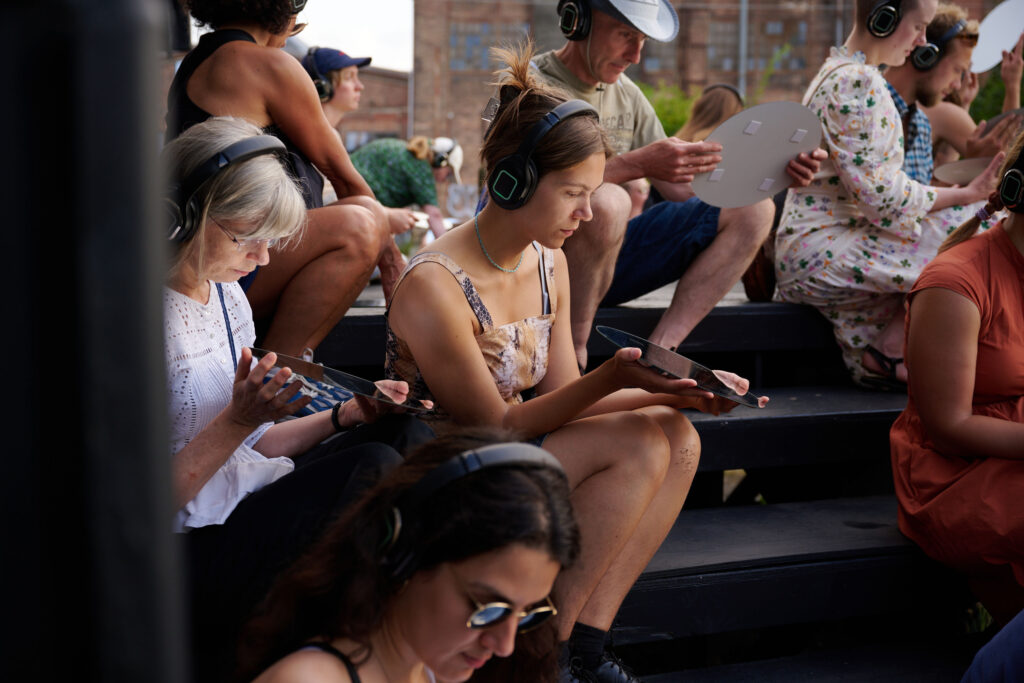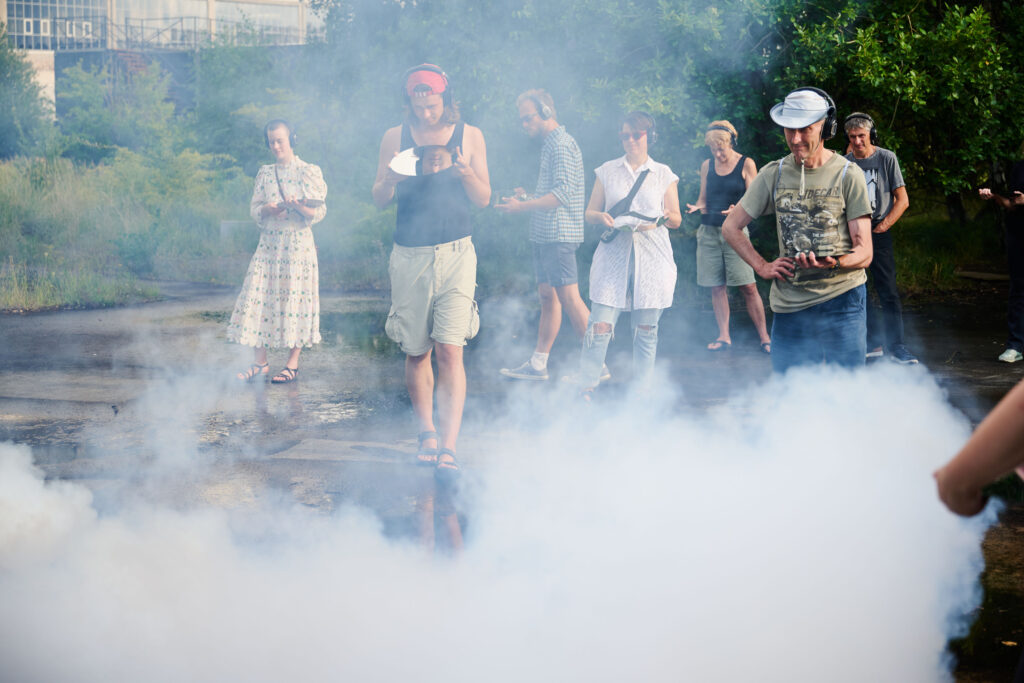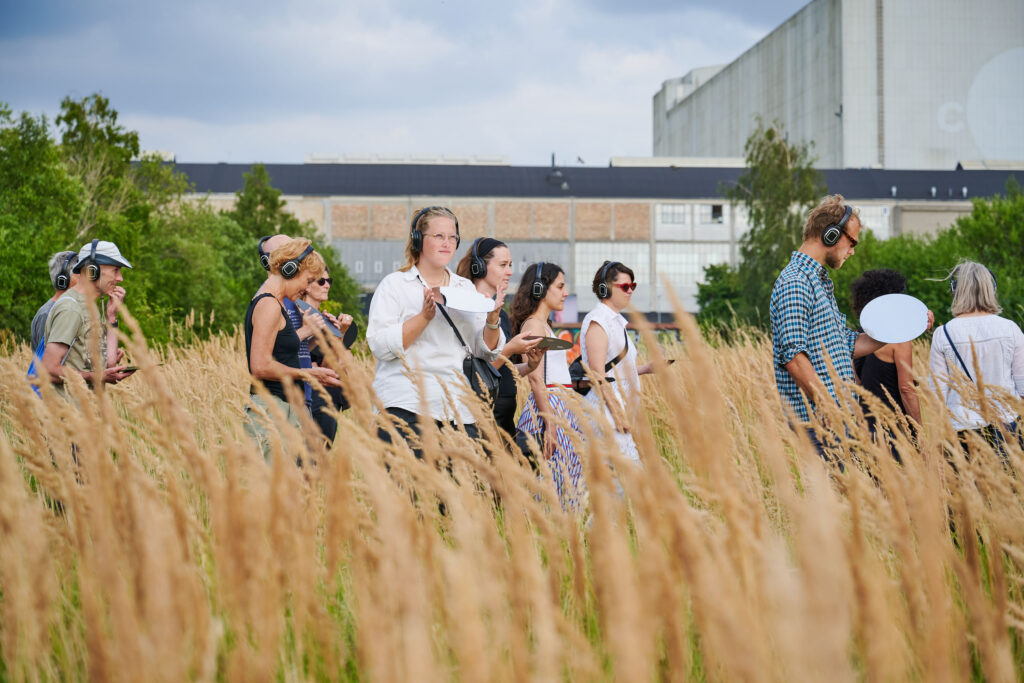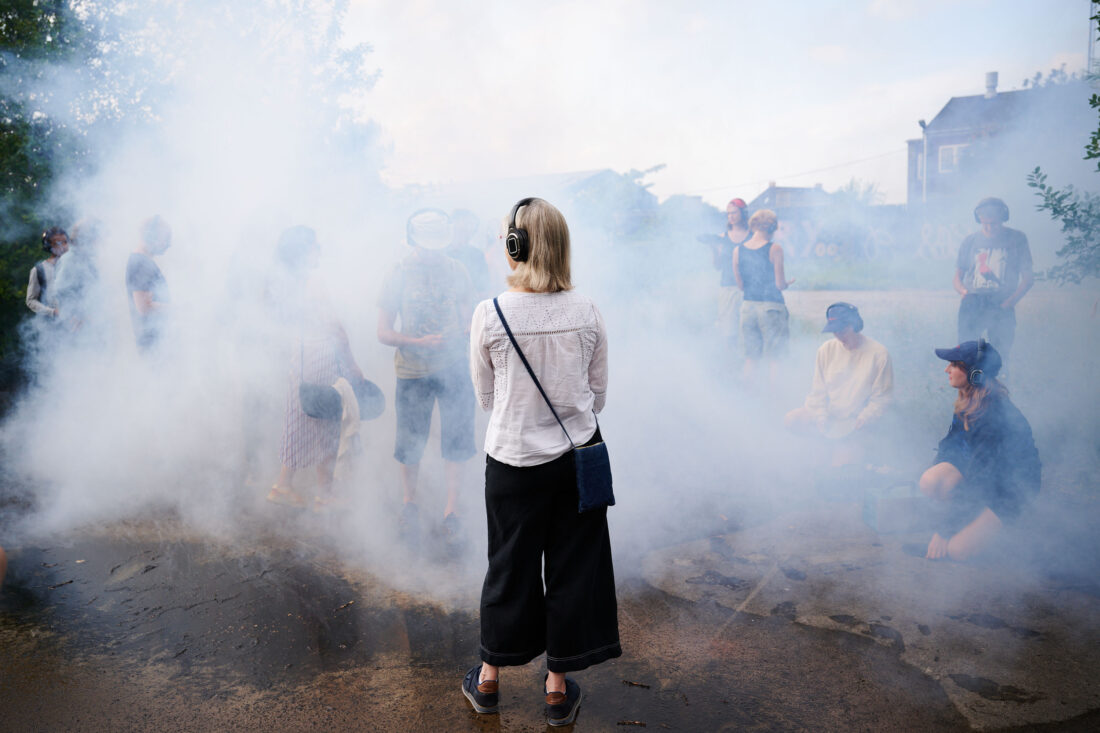Head in the Clouds – Reflections from Cumulus
By Tormod Carlsen
Tormod Carlsen is educated as a theatre scholar and theatre director – but these days he prefers to look upon himself as a gardener. Growing concrete and metaphorical gardens – and studying gardening is a large part of his current artistic practice and exploration. Tormod used to work with landscapes and landscape thinking in scenic arts, on a practical, historical and theoretical level. Producing shows in forests, remote islands and cityscapes. And even publishing a book and essays on the topic of northern landscapes in the scenic arts.
_
As I turned up for the performance I was looking up at a clear blue sky. Maybe not the best conditions for an outdoor show about clouds? – I thought to myself. We were given a set of headphones and after a short test, the audio track that would follow us for the duration of the show started. Over an airy sound-bed the two makers Andrea Gunnlaugsdóttir and Claudia Lomoschitz introduced themself and the show. We were invited to follow them on a journey through the “…politics of the skies seen from a feminist lens”.
They were dressed up with blue caps with the name of the show “Cumulus” written on them. Their shoes were 90’s retro looking, with huge air-filled soles. Their “uniform” gave associations to both a contemporary central European dance filed, Harajuku girls and tourguides. But we were not there to study them. We were invited to look up at the sky. Actually, the absence of clouds soon was incorporated in the prerecorded text: due to climate change many scientists fear we will have less clouds in the future. What felt like a beautiful evening got scary and sad with the ease they conveyed the facts about the times we live in. But it did not take long before I was brought back to a more playful state.
All participants were given a mirror, and we were invited to keep it and play with it during the show. The effect of this simple optical play brought us into a light, playful and investigative state. The mirrors also made it easier to see soft formations – beginnings of small clouds. But with the mirrors we were also brought into a potential liminal state – where what was up had become down. The skies had become present in between us, as reflections in each of our mirrors.

The ambivalence between the ease and softness the serious facts about the skies were conveyed to us with, and the fun, playful and explorative scenic strategies fascinated me throughout the show. As we were informed about the history and development of cloud seeding and the use of air manipulation in warfare – our guides had positioned themselves behind two smoke machines. As they fired smoke towards the audience it felt like a violent act, but most audiences, myself included, gladly entered into the clouds to feel the sensation of being lost in fog.
To reveal the making of scenic illusions as a scenic strategy is something one has become familiar with in much soft performance. It demystifies the performance as a carrier of truth and rather asks the audience to question how we know what we know. In this piece I also feel they succeed with these strategies because they add to the reality rather than forcing perspectives upon them. As when they softly used their bodies as a portal while talking about the gods or kept their hands up in the air while talking about the weight of the clouds. Actions many audience members wanted to test on their own bodies: Can you feel the weight of 10 tons of water in your hands?

It is in the very gentle associative use of space I feel they succeed best with their scenic strategies. The audio track was clearly episodic and allowed for no spontaneous change. Giving it kind of a podcast feel, episodically structured around themes and speculations concerning clouds. The connections between the places we moved and the content of the chapters in the “podcast” did not seem apparent at once.
But inevitably I started making connections between the sites, instructions and information we were given. Sometimes this became magical. As when they talk about the night sky and we are led under the construction of a small cabin. Or as when they played music after having talked about celebrations and I noticed how all the mirrors generated a disco ball effect with their reflections of the sun in the landscape.
Now, there is a strong contrast in this piece between the playfulness, ease and softness it unfolds with and the political and feminist premiss we were given. In the beginning of the piece this is followed up upon by consequently referred to female thinkers. Among other, were reminded about Eunice Newton Footes and how her discovery of that C02 emissions would lead to the global warming – was forgotten and overlooked for many years.

By that one inevitably started reading this information up against our surroundings – the show opened up speculations beyond the mere political. A scenic strategy one might not call site specific, but maybe site aware. Soon the clear blue sky and the talks about the clouds all made sense to me at least. We were just imagining stuff together. Beyond being fascinated by to what extend this was planned, improvised or just occurred, it also brought about some kind of lightness and hope in me: if one search for connections – one will find them. When the show ended – looking at the sunset by the waterfront – a sense of hopefulness in our new awareness took over. It was us and the clouds – that finally had revealed themselves. To connect to sites and nature is potentially a very simple performative act.



